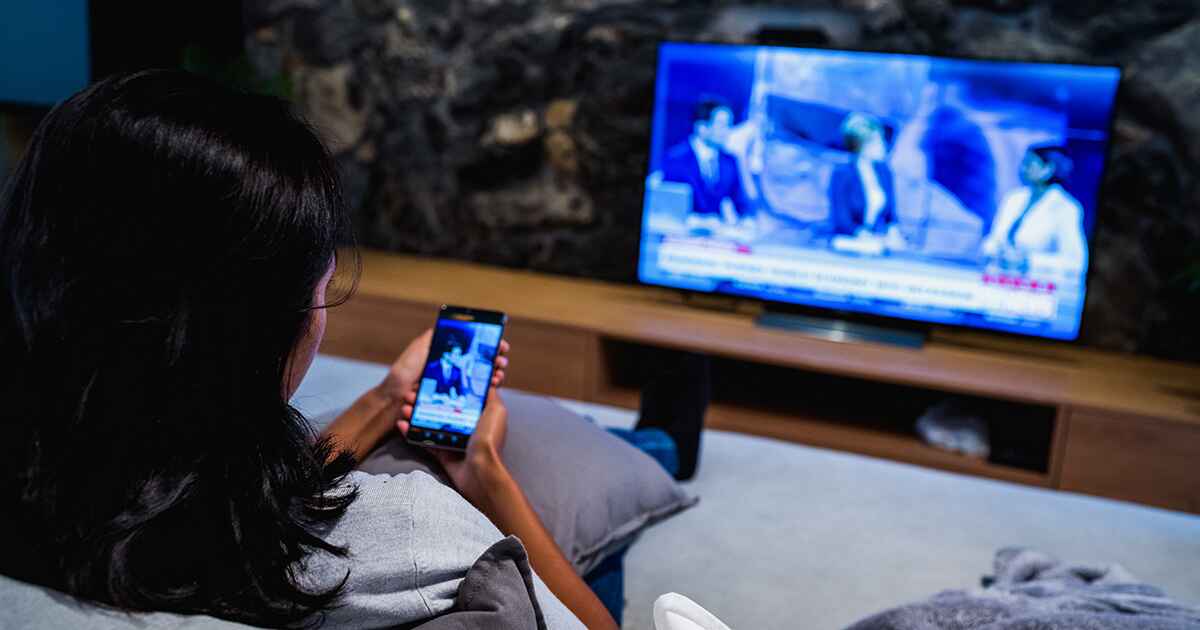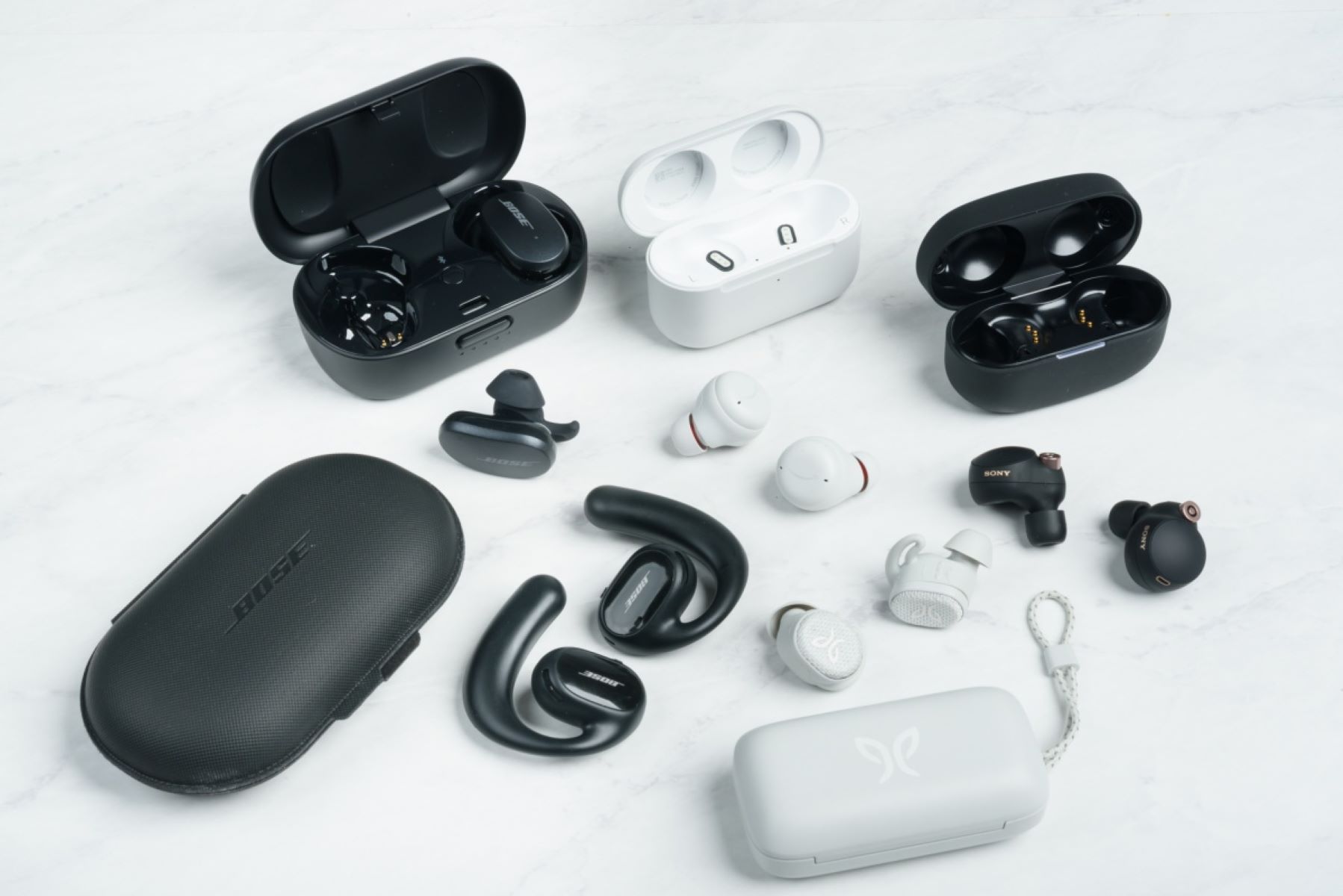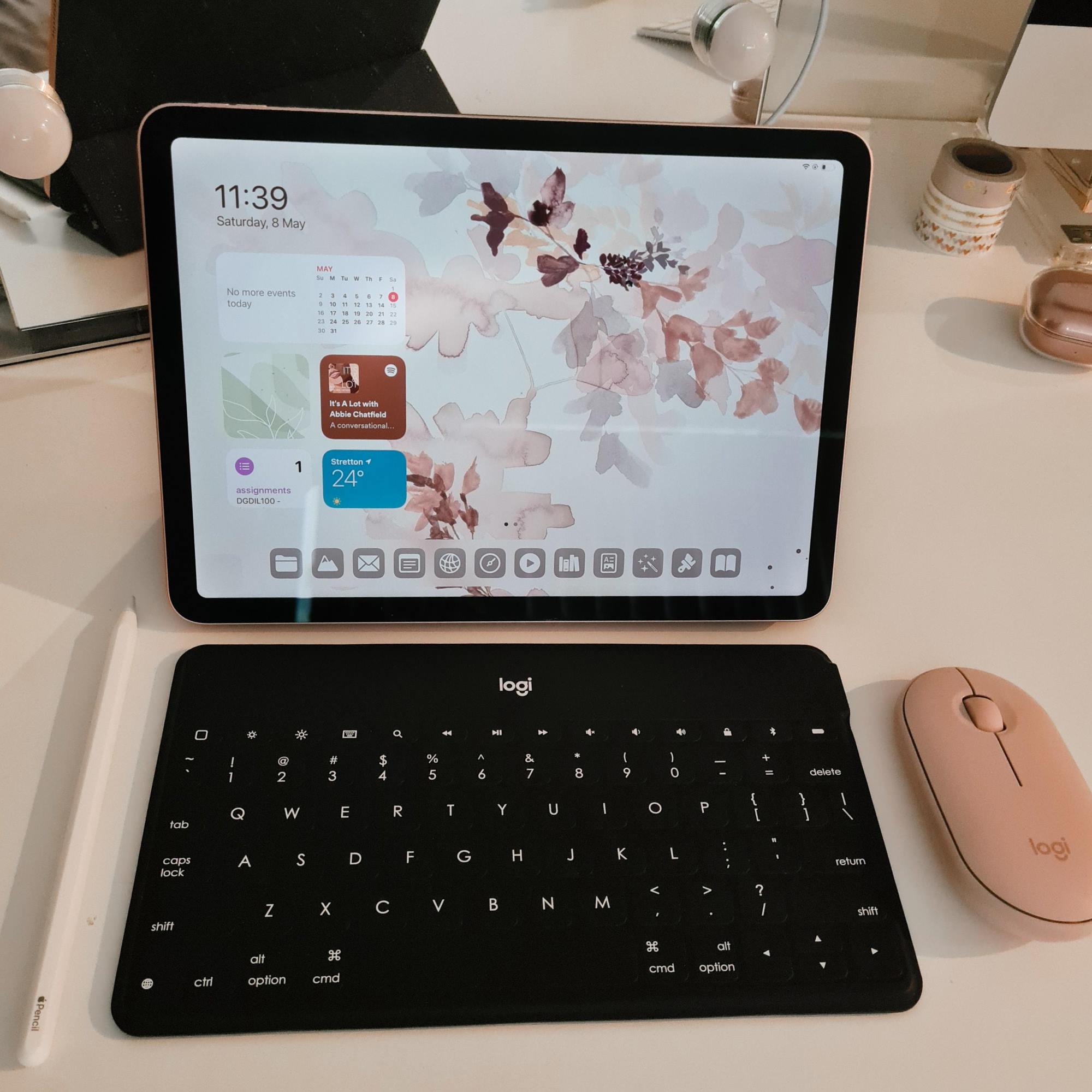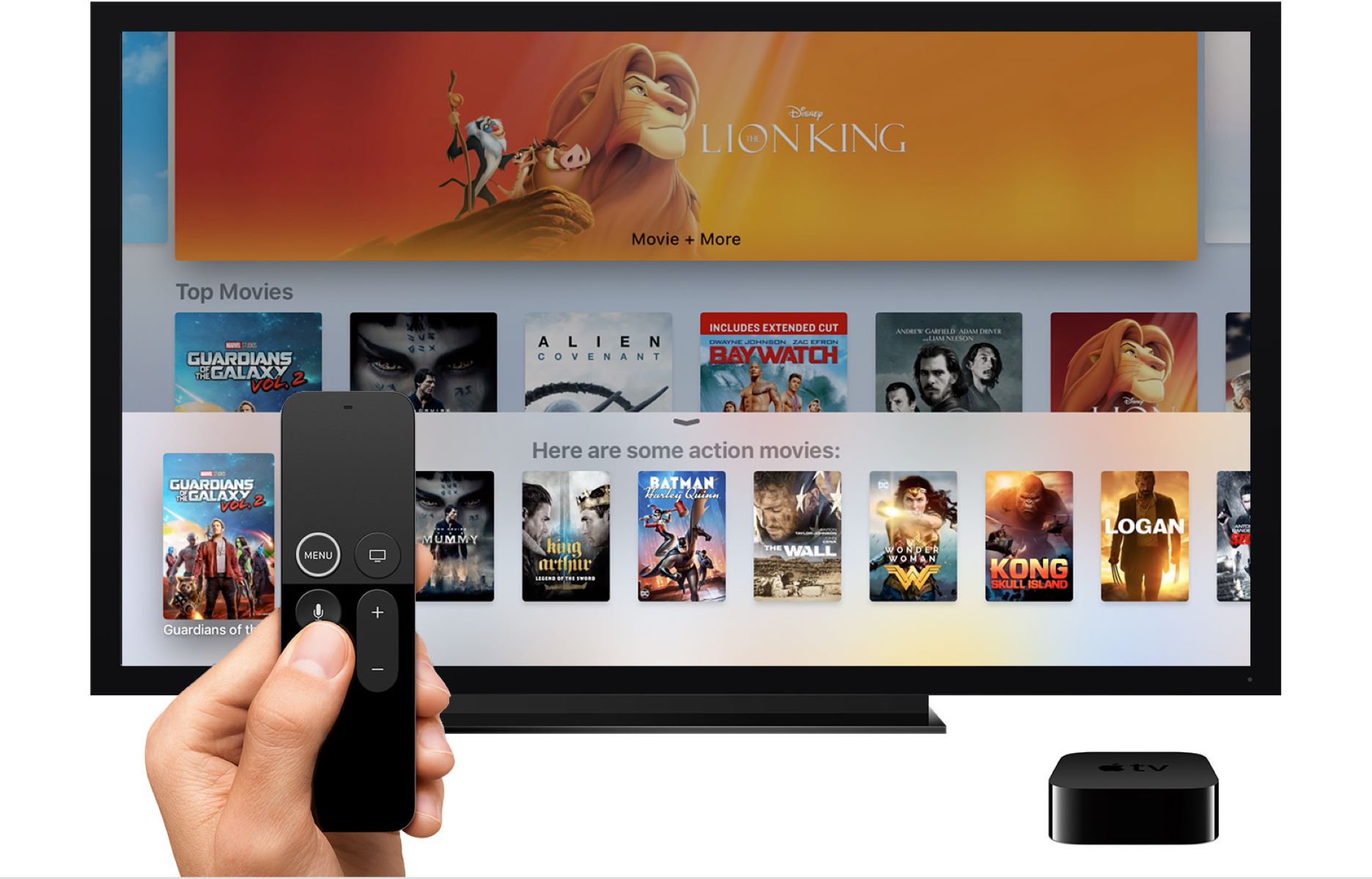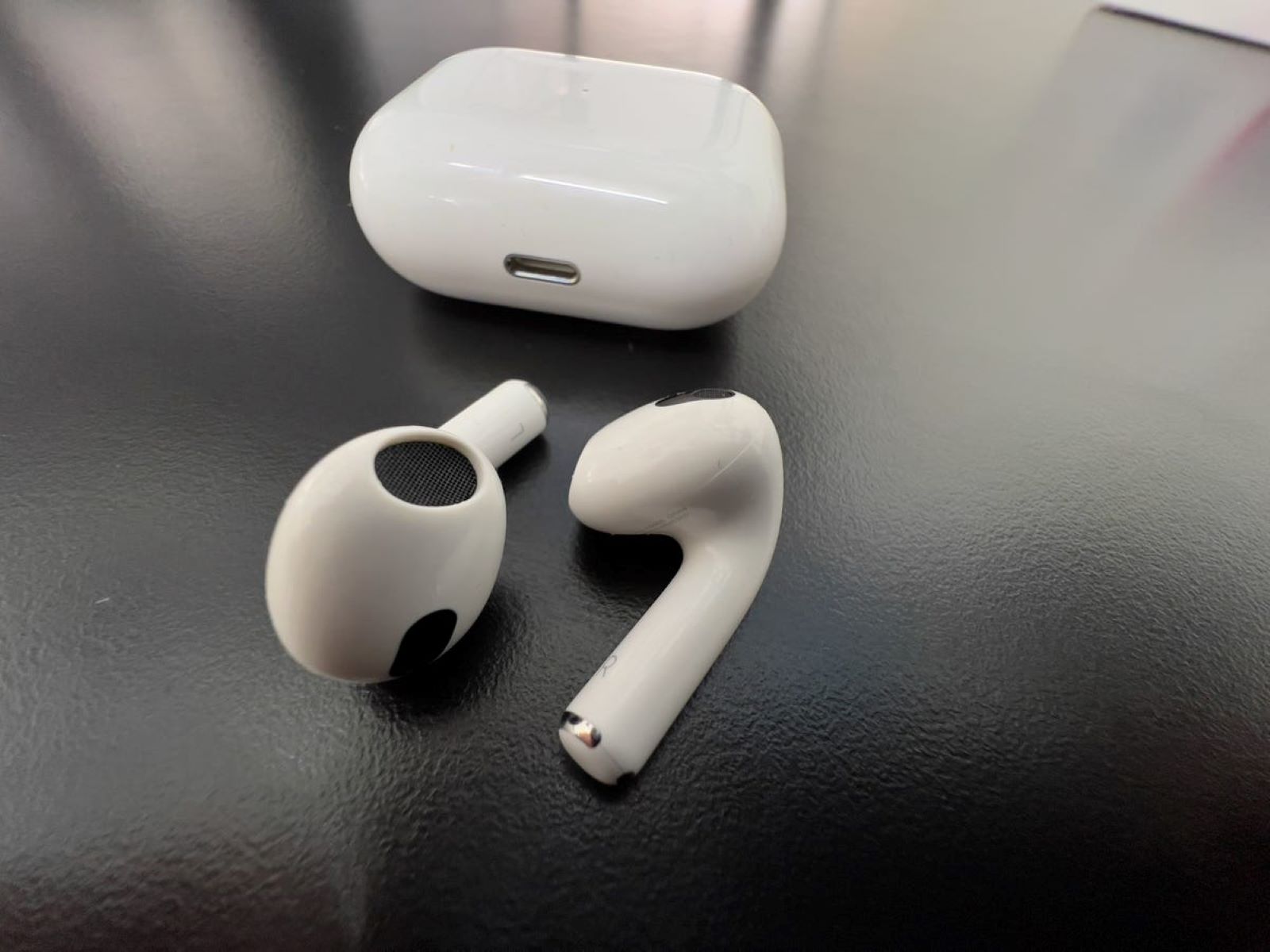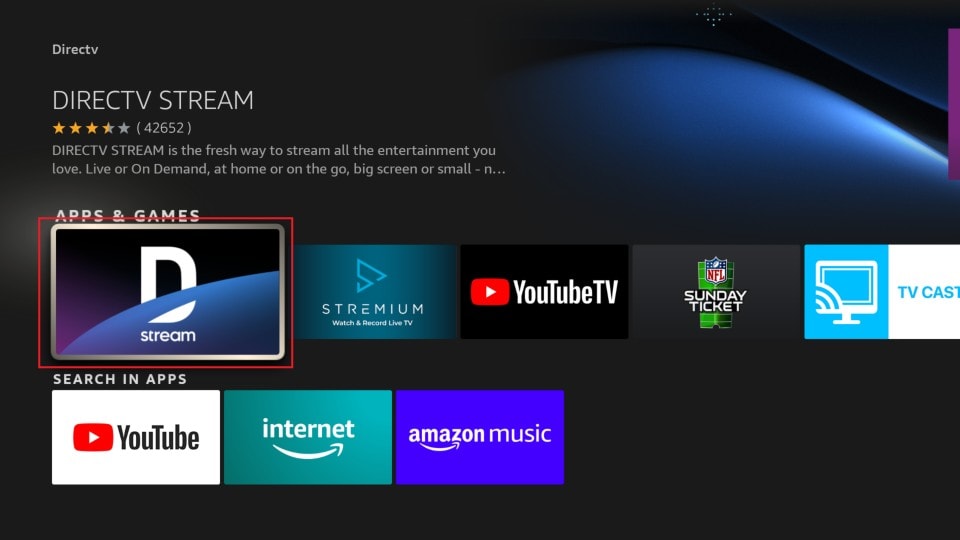Introduction
With the advancement in technology, it’s now easier than ever to connect your iPhone to a smart TV and enjoy all your favorite content on a bigger screen. Whether you want to watch videos, browse social media, or share photos with friends and family, connecting your iPhone to a smart TV can provide a more immersive viewing experience.
In this guide, we will explore various methods to hook up your iPhone to a smart TV. From using HDMI cables to wireless connections, we will cover all the different options available to you. Whether you have an older smart TV or the latest model, there is a solution that will work for you and allow you to enjoy your iPhone’s content on the big screen.
Before we dive into the different methods, it’s important to note that the compatibility and available connection options may vary depending on the model of your TV and iPhone. It’s always a good idea to check the user manuals or manufacturer’s websites for specific information about your devices.
So, if you’re ready to take your iPhone experience to the next level and enjoy your favorite content on a bigger screen, let’s explore the different ways to hook up your iPhone to a smart TV.
Step 1: Check if your TV is compatible with the iPhone
Before you start connecting your iPhone to a smart TV, it’s essential to ensure that your TV is compatible with iPhone devices. Not all TVs have built-in features to connect with iPhones, so it’s important to check the compatibility options available.
Here are a few things you can do to determine if your TV is compatible:
- Check for AirPlay compatibility: Some smart TVs come with built-in AirPlay support, which allows you to wirelessly stream content from your iPhone to the TV. To check if your TV supports AirPlay, go to the settings menu on your TV and look for the AirPlay or Screen Mirroring option. If you find it, your TV is compatible with iPhone devices.
- Look for HDMI ports: If your TV doesn’t have AirPlay support, check if it has HDMI ports. HDMI (High-Definition Multimedia Interface) is a common connection option that allows you to connect your iPhone to the TV using an HDMI cable. Look for HDMI input ports on your TV and ensure that your iPhone supports HDMI connections.
- Check for wireless display protocols: Some smart TVs support wireless display protocols like Miracast or Chromecast. These protocols allow you to mirror your iPhone’s screen on the TV wirelessly. To check if your TV supports these protocols, refer to the user manual or visit the manufacturer’s website for specific information.
If your TV doesn’t have any of the above-mentioned compatibility options, you may need to explore alternative methods like using an Apple TV or a Lightning Digital AV Adapter. We will discuss these options in the following steps.
Remember, it’s essential to check your TV’s compatibility options to ensure a smooth and seamless connection between your iPhone and the smart TV. Once you have determined the compatibility, you can move on to the next steps to connect your iPhone and start enjoying your favorite content on a bigger screen.
Step 2: Connect your iPhone to the TV using an HDMI cable
If your TV has HDMI ports and your iPhone supports HDMI connections, you can easily connect the two devices using an HDMI cable. This method provides a reliable and high-quality connection for streaming videos, playing games, and showcasing photos on a larger screen.
Here are the steps to connect your iPhone to the TV using an HDMI cable:
- Obtain an HDMI cable: Purchase an HDMI cable that is compatible with your iPhone and the TV. Keep in mind that newer iPhones may require a Lightning to HDMI cable, while older iPhones may need a different type of HDMI cable.
- Connect one end of the HDMI cable to the HDMI port on your TV: Locate the HDMI input port on your TV and carefully insert one end of the HDMI cable into it. Remember to take note of the HDMI input number (e.g., HDMI1, HDMI2) on your TV where you connect the cable.
- Connect the other end of the HDMI cable to your iPhone: Depending on your iPhone model, you may need an HDMI adapter or a Lightning to HDMI cable. Attach the HDMI adapter or cable to your iPhone’s charging port and then connect the HDMI cable to it.
- Switch on your TV and select the appropriate HDMI input: Use your TV remote to turn on the TV and navigate to the HDMI input that corresponds to the HDMI port you connected the cable to. You may need to use the “Input” or “Source” button on your remote to access the HDMI inputs.
- Unlock your iPhone and enjoy: Once you’ve selected the correct HDMI input on your TV, unlock your iPhone and you should see your iPhone’s screen mirrored on the TV. You can now play videos, browse apps, or share photos from your iPhone, and it will be displayed on the TV.
Keep in mind that some apps or content may not be available for mirroring due to copyright or DRM restrictions. In such cases, you may only see a blank screen or an error message on the TV.
Overall, connecting your iPhone to the TV using an HDMI cable is a straightforward and reliable method that provides a seamless streaming experience. It’s a great option if you want to enjoy your iPhone’s content on a larger screen without any lag or quality loss.
Step 3: Connect your iPhone to the TV using an Apple TV
If you have an Apple TV, you can easily connect your iPhone to the TV wirelessly using AirPlay. This method allows you to mirror your iPhone’s screen or stream content from your iPhone directly to the big screen.
Here’s how to connect your iPhone to the TV using an Apple TV:
- Set up your Apple TV: Ensure that your Apple TV is properly set up and connected to your TV. Follow the instructions provided with your Apple TV to connect it to your Wi-Fi network and link it with your TV.
- Connect your iPhone and Apple TV to the same Wi-Fi network: It is crucial that both devices are connected to the same Wi-Fi network for AirPlay to work properly. Verify that your iPhone and Apple TV are connected to the same network before proceeding.
- Enable AirPlay on your iPhone: Swipe down from the top right corner of your iPhone’s screen to access the Control Center. Tap on the “Screen Mirroring” or “AirPlay” option (the name may vary depending on the iOS version). A list of available devices will be displayed.
- Select your Apple TV from the list: Tap on your Apple TV’s name from the list of available devices in the Screen Mirroring or AirPlay menu. Your iPhone’s screen will then be mirrored on the TV.
- Unlock your iPhone and start streaming: Once the connection is established, you can use your iPhone as usual, and the content will be displayed on the TV. Whether you want to watch videos, show photos, or play games, everything on your iPhone will be mirrored on the big screen.
AirPlay allows you to enjoy seamless streaming without the need for any cables. You can even switch to different apps or lock your iPhone while the content continues to be displayed on the TV.
One of the primary benefits of using AirPlay with an Apple TV is the ability to wirelessly stream high-quality audio and video from your iPhone to the TV. You can enjoy immersive movie experiences, listen to music with enhanced sound quality, and even display presentations or slideshows on a larger screen.
However, it’s important to note that both your iPhone and Apple TV must be compatible with AirPlay for this method to work. Additionally, keep in mind that streaming content through AirPlay may consume significant network bandwidth, so ensure that you have a stable and fast internet connection for optimal performance.
Step 4: Connect your iPhone to the TV using a Lightning Digital AV Adapter
If you don’t have an Apple TV but still want to connect your iPhone to a TV using a wired connection, you can use a Lightning Digital AV Adapter. This adapter allows you to connect your iPhone to the TV using an HDMI cable, providing a reliable and high-quality connection.
Here’s how to connect your iPhone to the TV using a Lightning Digital AV Adapter:
- Purchase a Lightning Digital AV Adapter: Get a Lightning Digital AV Adapter that is compatible with your iPhone model. This adapter has a Lightning connector on one end and an HDMI port on the other.
- Connect the Lightning Digital AV Adapter to your iPhone: Plug the Lightning connector of the adapter into the charging port of your iPhone. Make sure it fits securely.
- Connect one end of the HDMI cable to the adapter: Take the HDMI cable and connect one end to the HDMI port of the Lightning Digital AV Adapter.
- Connect the other end of the HDMI cable to your TV: Find an available HDMI input port on your TV and insert the other end of the HDMI cable into it. Note the HDMI input number on your TV for reference.
- Switch on your TV and select the appropriate HDMI input: Turn on your TV and use the remote control to navigate to the HDMI input that corresponds to the HDMI port you used. Use the “Input” or “Source” button on your remote to select the correct HDMI input.
- Unlock your iPhone and enjoy: Unlock your iPhone and you should see your iPhone’s screen mirrored on the TV. You can now watch videos, stream content, or share photos on the big screen.
This method offers a convenient way to connect your iPhone directly to the TV without requiring any additional devices. It provides a stable connection and ensures that you can enjoy your iPhone’s content with high-quality visuals and sound.
Keep in mind that the Lightning Digital AV Adapter is compatible with most iPhone models, but it’s always a good idea to check the compatibility information provided by the manufacturer. Additionally, some apps or content may not be available for mirroring due to copyright or DRM restrictions.
Overall, using a Lightning Digital AV Adapter to connect your iPhone to the TV is a reliable and straightforward option that allows you to share and enjoy your iPhone’s content on a larger screen.
Step 5: Connect your iPhone to the TV using a wireless connection
If you prefer a cable-free option, you can connect your iPhone to the TV using a wireless connection. This method allows you to stream content from your iPhone directly to the TV without the need for any cables or adapters.
Here’s how to connect your iPhone to the TV using a wireless connection:
- Check for AirPlay compatibility: Ensure that your TV supports AirPlay, a wireless technology developed by Apple that allows you to stream content from your iPhone to the TV. Consult your TV’s user manual or manufacturer’s website to confirm AirPlay compatibility.
- Connect your iPhone and TV to the same Wi-Fi network: Make sure both your iPhone and the TV are connected to the same Wi-Fi network. This is crucial for establishing a wireless connection between the two devices.
- Access the Control Center on your iPhone: Swipe down from the top right corner of your iPhone’s screen (or swipe up for older iPhone models) to open the Control Center.
- Tap on “Screen Mirroring” or “AirPlay”: In the Control Center, tap on the “Screen Mirroring” or “AirPlay” option (the name may vary depending on the iOS version). A list of available AirPlay devices will appear.
- Select your TV from the AirPlay device list: Locate your TV from the list of available AirPlay devices and tap on it to establish the connection.
- Enter the AirPlay code if prompted: Some TVs may require you to enter a code displayed on the TV screen to complete the connection. If prompted, enter the code on your iPhone to establish the wireless connection.
- Unlock your iPhone and start streaming: Once the connection is established, your iPhone’s screen will be mirrored on the TV. You can now enjoy watching videos, browsing apps, or sharing photos directly on the big screen.
Streaming wirelessly using AirPlay allows you to enjoy a cable-free experience with the convenience of using your iPhone as a remote control. You can effortlessly navigate through apps, play media, and control the volume directly from your iPhone.
It’s important to note that AirPlay compatibility may vary depending on the TV model and iPhone version. Some TVs may require firmware updates to enable AirPlay functionality. Additionally, certain apps or content may not be available for streaming due to copyright or DRM restrictions.
Overall, connecting your iPhone to the TV through a wireless connection is a convenient and hassle-free option that allows you to experience your iPhone’s content on the big screen without any cables or adapters.
Step 6: Troubleshooting Tips
While connecting your iPhone to a smart TV is generally a straightforward process, you may encounter some issues along the way. To help you troubleshoot and overcome common problems, here are some useful tips:
- Ensure all devices are up to date: Ensure that both your iPhone and smart TV have the latest software updates installed. This can resolve compatibility issues and improve the overall performance of the connection.
- Double-check the HDMI connections: If you’re using an HDMI cable or adapter, make sure the connections are secure on both ends. Sometimes, loose connections can cause the TV not to recognize the iPhone.
- Restart your devices: A simple restart of your iPhone, smart TV, or any other device in the connection chain can often resolve minor issues. Power off the devices, wait a few seconds, then power them back on.
- Verify Wi-Fi connectivity: If you’re using a wireless connection, ensure that both your iPhone and TV are connected to the same Wi-Fi network. Weak or insufficient Wi-Fi signals can cause the connection to drop or become unstable.
- Check for AirPlay or screen mirroring restrictions: Some apps or streaming services may have restrictions on AirPlay or screen mirroring. If you’re unable to mirror specific content, it may be due to these limitations. Try using a different app or contact the app developer for more information.
- Try a different HDMI port: If you’re using an HDMI cable or adapter, try connecting it to a different HDMI port on your TV. Sometimes, certain HDMI ports may have compatibility issues, and switching ports can resolve the problem.
- Perform a factory reset: If all else fails and you’re still experiencing issues, you may consider performing a factory reset on your iPhone or smart TV. This should be a last resort as it will erase all data and settings, so ensure you have backups in place.
If you’re still encountering difficulties after trying these troubleshooting tips, consult the user manual for your iPhone or smart TV, or reach out to the manufacturer’s support for further assistance. They may be able to provide specific solutions tailored to your devices.
Remember that resolving connectivity issues may require a bit of trial and error, but with patience and persistence, you can overcome most obstacles and connect your iPhone to your smart TV successfully.
Conclusion
Connecting your iPhone to a smart TV opens up a whole new world of entertainment and convenience. Whether you want to watch videos, stream content, play games, or share photos, there are several methods available to hook up your iPhone to a TV.
Throughout this guide, we’ve explored different options, including connecting via HDMI cables, using an Apple TV, utilizing a Lightning Digital AV Adapter, and establishing a wireless connection. Each method offers its own advantages and may be more suitable depending on your specific setup and preferences.
Before attempting to connect your iPhone to a smart TV, it’s important to check the compatibility of your TV with iPhone devices. Verify if your TV has AirPlay support, HDMI ports, or wireless display protocol compatibility. This will ensure that you choose the best method to establish a seamless connection.
While connecting your iPhone to a smart TV is generally a straightforward process, you may encounter some troubleshooting issues along the way. Make sure all devices are up to date, check the connections, verify Wi-Fi connectivity, and try different solutions to overcome any obstacles you may encounter.
By following the steps and suggestions outlined in this guide, you can easily connect your iPhone to a smart TV and enjoy your favorite content on a larger, more immersive screen.
Remember to always refer to the user manuals of your specific iPhone model and smart TV for detailed instructions and compatibility information.
So, why wait? Start connecting your iPhone to your smart TV and experience a whole new level of entertainment!







